Ukraine unleashes its deadly Dragon’s Breath fire drone in astonishing new footage: Experts reveal how Kiev is using the weapon – which drops 4,000°F molten metal on enemies – to strike fear into Putin’s forces
As Russian forces continue to wage war in Ukraine, Kiev’s defenders are using new solutions to destroy enemy positions in the absence of sufficient Western weapons.
Ukrainian soldiers along the front, struggling with a lack of aid, have been forced to innovate and devise budgetary solutions to contain the Russian advance since the beginning of the war.
Now, new footage has emerged of their latest invention, a drone with the ominous name ‘Dragon’s Breath’. Shocked Russian troops are already protesting on social media about the device’s brutal effectiveness and calling for help.
Thermite bombs, which rain molten chunks of metal down on their hapless targets, have been used several times in war by Vladimir Putin’s forces. However, they are usually used in rockets or cluster munitions fired indiscriminately from bombers, which are much more expensive.
Experts believe that by successfully attaching the weapons to the landing gear of first-person-view (FPV) drones, the Kiev men have developed a cost-effective way to deliver highly accurate incendiary bombs to the invaders, thus gaining new advantages on the battlefield.
New footage has emerged of the menacingly named ‘Dragon’s Breath’ drone being deployed on Russian positions
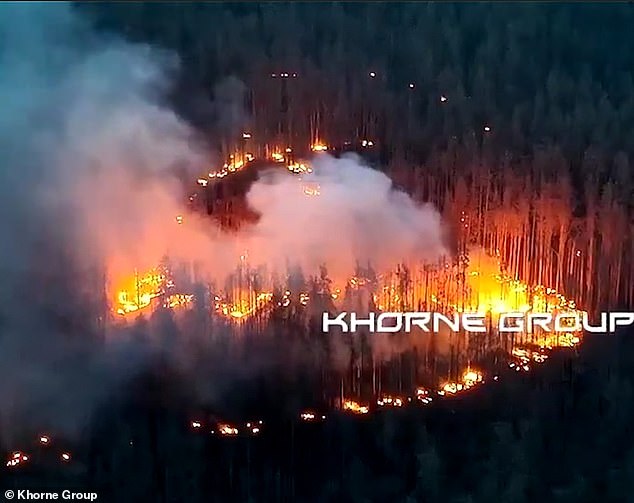
Ukraine’s armed forces have begun using drones to deliver thermite munitions
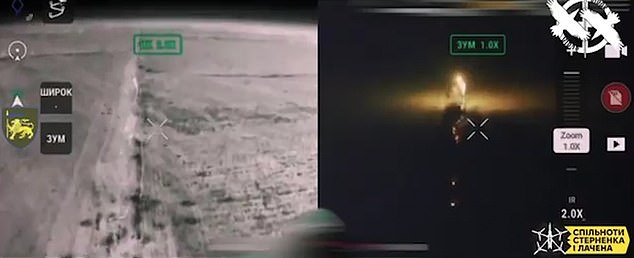
Cheap FPV drones could carry the munitions and spray the molten metal over Russian positions
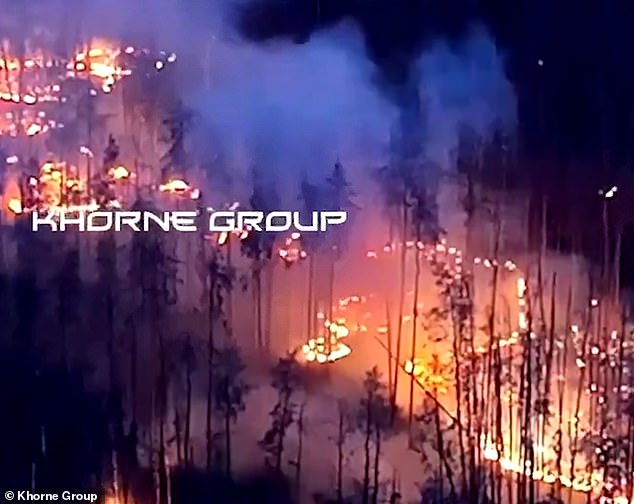
Thermite munitions could also be used to destroy Russian artillery batteries, armored vehicles and other military equipment in the forest
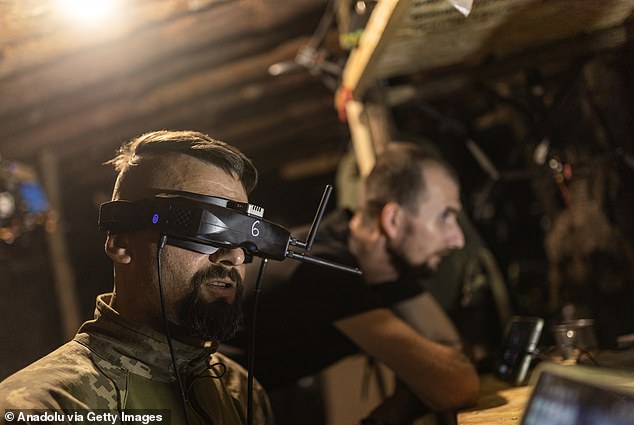
Ukrainian soldiers fly an FPV drone towards Kreminna, Luhansk Oblast, Ukraine, on August 25, 2024
The first images of the Dragon’s Breath drones surfaced on Monday.
The first clip, which has since been widely shared on social media, shows a small FPV drone in the air over a forested area in eastern Ukraine, where Russian troops are reportedly hiding.
The pilot detonates the thermite bomb, and a shower of red-hot shrapnel shoots out from beneath the drone. The drone scans the tree line, spraying molten metal over the Russian positions below.
Two more fragments were published in quick succession – one by The 60th Mechanized Brigade of Ukraine and another from the ‘Khorne Group’, a part of the 116th Mechanized Brigade of Ukraine. Both photos show how the thermite set the trees on fire, creating a hellish inferno.
A few days later, a video surfaced on the messaging app Telegram. It appeared to show a Russian soldier standing among the burnt remains of his troops’ camp, calling for humanitarian aid. However, the video has not yet been verified.
“Strike Drones are our wings of vengeance, bringing fire straight from the sky!” reads the 60th Mechanized Brigade’s Facebook post.
“They pose a real threat to the enemy, burning down his positions with a precision that no other weapon can match.”
Thermite munitions can also be used to destroy Russian artillery batteries, armored vehicles and other military equipment in the forest.
The chemical mixture of aluminum powder and iron oxide ignites at temperatures above 2,200 degrees Celsius (4,000 degrees Fahrenheit) and can melt through steel, making it an extremely effective demolition weapon.
RUSI official and defence analyst Sam Cranny-Evans told MailOnline: ‘The Dragon’s Breath drones appear were used to make it difficult for the Russians to hold positions.
‘Thermite munitions burn extremely fiercely and Russian troop locations often contain a lot of flammable materials: wood, grass, uniforms… and that’s not even mentioning munitions.
‘I don’t know if a trench would burn down completely, but bunkers and trenches built of wood, canopies and other similar materials would certainly catch fire, either from the thermite itself or if the trees around them caught fire.
‘Even if the trench infrastructure itself is not physically destroyed, the potential for fires to destroy wooden structures and adjacent areas would make Russian positions untenable. Troops would therefore be forced to either fight the fires – something that is extremely difficult given their intensity – or evacuate their positions.
‘Drones too ‘Ensure an extremely precise delivery mechanism so that the thermite almost always reaches its target, provided the drone does not take countermeasures.’
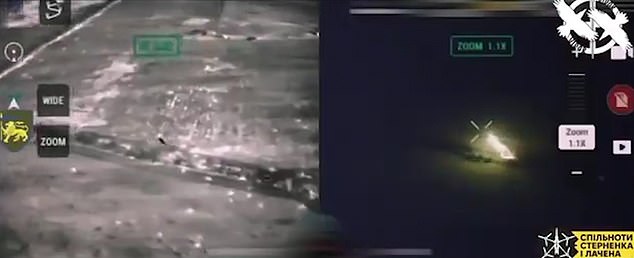
Drone cameras capture the devastating power of thermite bombs dropped on forest areas occupied by Russian forces
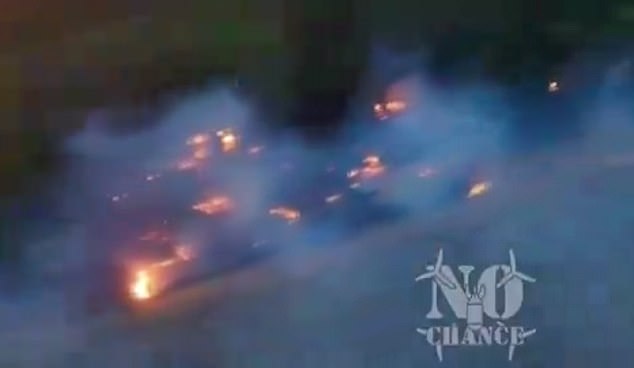
On Monday, images of the Dragon’s Breath drones surfaced for the first time
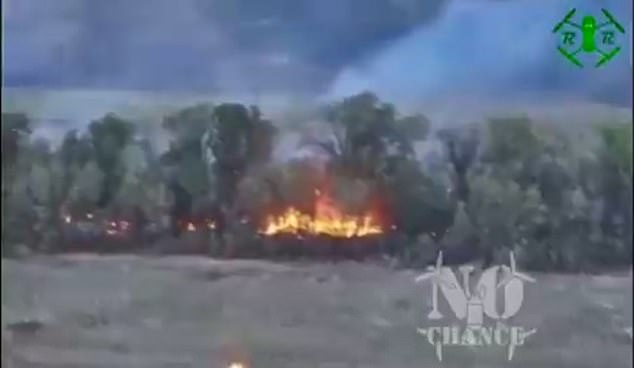
The first clip, which has now been widely shared on social media, shows a small FPV drone in the air over a forested area in eastern Ukraine, where Russian troops are reportedly holed up.
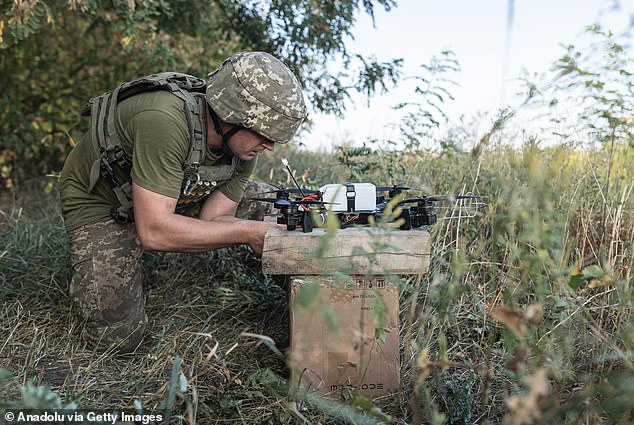
The Russian-Ukrainian war has seen both sides pioneer advanced drone warfare tactics
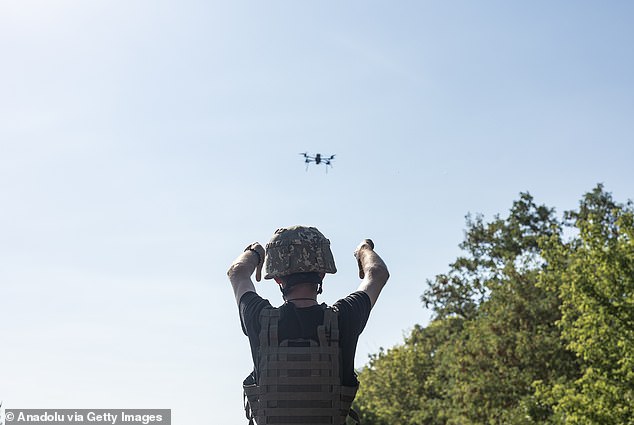
Ukrainian soldiers prepare FPV drones as military mobility of Ukrainian soldiers continues towards Kreminna, Luhansk Oblast, Ukraine, on August 25, 2024
Cranny-Evans then explained how the Dragon’s Breath drones could help Ukrainian divisions quickly retake occupied territory if deployed correctly.
“The timing of drone thermite attacks is crucial to their long-term effectiveness,” the researchers said.
‘If Ukrainian forces were to launch an offensive shortly after the thermite was deployed, they would likely be able to take advantage of the chaos.
‘The ability of their Russian opponents to mount an effective defense would be severely diminished, so an immediate follow-up offensive could allow Kiev forces to retake the position with relative ease.’
Samuel BendettA drone researcher at the Center for a New American Security think tank also concluded that the drone-mounted thermite bombs could be an extremely effective addition to Ukrainian forces’ arsenal of battlefield tricks.
“I have not seen that specific application of drones before, but I am not surprised that Ukrainians are once again taking the lead. They are the first to use drones in new ways in this conflict,” he said.
(Wooded areas) are often where soldiers hide, where systems such as artillery and mortars can be positioned to hide from drones, and where troops can regroup, reinforce, and otherwise position themselves for continued warfare.
‘So it is important to remove such areas.’
But there are also concerns that the new approach could lead to more widespread use of incendiary devices, which would in turn significantly increase the risks to civilians living in conflict zones, said Dr Iain Overton, director of Action on Armed Violence (AOAV).
“Unlike conventional munitions that are specifically aimed at military targets, thermite bombs can cause widespread fires that destroy entire neighborhoods, schools, hospitals and homes,” according to an AOAV press release issued earlier this week.
‘The intense heat not only causes immediate destruction, but also poses long-term health risks to survivors, who can suffer severe burns, respiratory problems and psychological trauma.
‘Thermite bombs represent a broader trend in modern warfare, where technological advances are blurring the lines between legitimate military targets and civilian infrastructure… Their power means that even a single bomb, deployed with precision, can start fires that are difficult, if not impossible, to extinguish.’
It remains to be seen to what extent Ukrainian units will use Dragon’s Breath to clear the front line.
But one thing is certain: it won’t be long before Putin’s forces respond and fight fire with fire.
